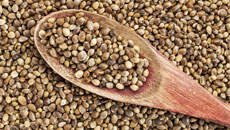Cardiovascular disease, which includes heart disease and stroke, is the leading cause of death in Canada as well as in many other countries. People of South Asian descent, in particular, are more vulnerable to heart disease and stroke than the general population. This has been a suspicion long held by many physicians, yet has only recently been confirmed by researchers at Ontario’s McMaster University in an extensive study involving collaborators from India, Pakistan, Bangladesh and the World Health Organization.
Published in the Journal of the American Medical Association in 2007, the study also uncovered an alarming statistic, which suggests that South Asians are more likely to die from cardiovascular disease five to ten years earlier than any other ethnic group.
Even more worrisome is the indication that South Asian men have the highest risk of developing heart disease before the age of 40. A British study concluded that South Asian males under 40 were 10 times more likely to suffer from heart attacks than similarly aged males of Chinese or European descent.
There are many anecdotes from North American and British heart surgeons, who are puzzled by the number of young South Asian men being wheeled into their operating rooms for heart surgery. Many of these heart patients appeared to be reasonably fit yet upon further examination the surgeons made a startling discovery. The hearts of these South Asian males in their 30’s were equivalent to those of 70-year-old overweight Caucasian males.
Since South Asians (people whose roots are from India, Pakistan, Bangladesh, Sri Lanka, and Nepal) represent about one fifth of the world’s population with close to one million residing in Canada and two million in the United States, heart researchers and physicians have made it a priority to identify the risk factors that affect this ethnic group. Education is also a focus, as there is a fear that the lack of information and resources, often a result of language and cultural barriers in the West, contribute to the higher rates of heart and stroke disease among South Asians.
What is Heart Disease?
Heart Disease is a term that encompasses a variety of conditions that impact the heart and heart function. Coronary artery disease is probably the most common type of heart disease that can lead to death in humans and refers to disease that affects those arteries that supply blood to the heart itself. “Atherosclerosis” is the main cause of coronary artery disease and occurs when these arteries become narrowed or blocked due to a build-up of fatty deposits or plaque, which are medically known as “atheroma”.
As a result of the build-up on the coronary artery walls, the blood supply to the heart is restricted and can lead to chest pains or “angina.” If an artery is completely blocked, thus preventing the heart from getting oxygen, a heart attack can occur.
Since approximately 19,000 Canadians die each year from heart attacks and with most of the deaths occurring before the victims arrive at the hospital, it is important to recognize the warning signs of an oncoming heart attack and to seek help immediately.
Warning Signs of a Heart Attack
• Pain, squeezing, tightness, or uncomfortable pressure in the chest. The chest discomfort may either develop slowly or come on suddenly.
• The pain may extend to other areas of the body including the back, shoulders, neck, jaw, and down one or both arms.
• Some heart attack sufferers have reported that they did not experience any chest pain at all; however, they did feel heaviness and tightness in their upper bodies.
• Shortness of breath or difficulty breathing.
• Dizziness
• Nausea or vomiting
• Cold sweat or clamminess
What is Stroke?
A stroke occurs when part of the brain is prevented from getting its normal blood flow thereby causing brain cells to die. Factors that can interrupt the blood supply to the brain include atherosclerosis, blood clots, which form elsewhere in the body and travel to the brain, and ruptured blood vessels – often caused by uncontrolled high blood pressure.
Stroke is the third leading cause of death in Canada with more women dying than men each year. The effects of stroke depend on how much brain damage has occurred. Various body functions such as speech, mobility, vision, and memory can be affected.
Warning Signs of Stroke
The following warning signals of stroke can occur suddenly and may even be temporary.
• Feeling of weakness or loss of strength in the face, arm, or leg, especially on one side of the body.
• Loss of balance, dizziness, or trouble walking.
• Vision trouble in one or both eyes.
• Speech difficulty or confusion.
• Severe headache with no apparent cause.
The Canadian Heart and Stroke Foundation recommends that if any of the symptoms for heart attack and stroke that are listed above are experienced then 9-1-1 or the local emergency number should be called immediately. Responding as quickly as possible can considerably improve the chances of survival and recovery.

Risk factors of Heart and Stroke Disease
The risk factors for heart disease and stroke are divided into two categories:
“Modifiable,” which are factors that you can do something about, and “non-modifiable”, which are factors that you are not able to do anything about – like age, gender, family history, and ethnicity.
Some modifiable risk factors and their preventative measures include:
• High cholesterol levels can cause build-up of fatty deposits in artery walls, which can eventually lead to a heart attack or stroke. There are two types of cholesterol: LDL or bad cholesterol, which can block arteries and HDL or good cholesterol, which can help to unblock arteries. Eating less red meat and high fat dairy products as well as avoiding foods that contain trans fats will help to decrease one’s LDL cholesterol intake. Foods that should be included in a low cholesterol diet are Omega-3-rich fish, high fibre foods, and polyunsaturated margarine and oils.
• High blood pressure or hypertension is a measure of how much force is exerted by blood on artery walls. If the force is too high, then scarring can occur in the artery walls thereby causing fatty deposits to build up. High blood pressure can also lead to the weakening of the heart as well as the rupturing of blood vessels that can result in a stroke. Since there are often little or no symptoms of high blood pressure, it is recommended that one should visit a doctor for a check-up every one to two years.
• Diabetes, which occurs when the body is unable to break down blood sugar, actually doubles the risk of heart disease and stroke. In fact, according to the American Diabetes Association, two out of three people, who suffer from diabetes, die from heart disease or stroke. Type 1 diabetes develops in children and young adults and affects about 10 percent of all diabetes patients. Ninety percent of diabetics suffer from type 2 diabetes, which usually develops later in life and in many cases, because of being overweight. Studies focused on urbanized South Asians suggest that they are 4 to 5 times more likely to develop type 2 diabetes than Caucasians. Maintaining a healthy weight and reducing abdominal fat help to lower the chances of developing type 2 diabetes.
• Obesity or being overweight significantly increases one’s risk of heart disease, stroke, and diabetes. Waist measurements are helpful in determining whether someone is at increased risk. South Asians are more at risk if their waist circumference exceeds 90 cm (35 inches) for men or 80 cm (32 inches) for women. Healthy eating habits and becoming physically active not only contributes to proper weight loss, but also lowers blood cholesterol levels.
• Physical inactivity is one of the main reasons why South Asians are most at risk for heart disease and stroke according to researchers. Moderate exercise, such as a daily 30-minute brisk walk can decrease the risk of heart disease by 50 percent.
• Binge drinking and excessive alcohol consumption can lead to high blood pressure, heart disease, and stroke. Binge drinking is unfortunately prevalent in South Asian communities where some individuals who normally do not drink during the week find themselves drinking excessively at weekend parties or functions.
• Smoking negatively impacts one’s health to such a substantial degree that people who quit smoking entirely often add years to their lives and enjoy an immediate and dramatic reduction to their risk of heart disease and stroke.
• Social factors such as stress, depression, and anger are known to contribute to the chances of heart attacks and stroke. Identifying the sources of stress, practicing anger management, and seeking the advice of relevant healthcare professionals are suggested methods of response.
Further research is being conducted on whether South Asians have unique chemical imbalances, which may be added risk factors in the development of heart disease and stroke. For now, however, the scientists who led the McMaster University study including Ontario cardiologist Dr. Salim Yusuf, have suggested that as South Asians become more urbanized they undergo certain lifestyle changes such as exercising less and having diets low in fruits and vegetables. When these changes are combined with perhaps being more genetically prone to having higher cholesterol levels, higher incidences of diabetes, and increased abdominal fat, the result can be an elevated risk of heart disease and stroke at a younger age for many South Asians.
Healthcare professionals across the board stress the importance of leading a healthy lifestyle. Tina Sekhon, Clinical Pharmacist at British Columbia’s Royal Columbian Hospital, has observed a fair number of local South Asian heart, stroke, and diabetes patients. “There are many ingredients in the recipe for disaster. The key is to reduce your modifiable risk factors as much as possible,” she advises.
In his recent book titled “How to Beat the Heart Disease Epidemic Among South Asians”, Dr. Enas A. Enas, the director of the CADI Research Foundation in Illinois and noted heart researcher, explains it well by stating “while your genes may have loaded the gun, it is lifestyle choices that pull the trigger.” Since South Asians appear to be genetically pre-disposed to having a higher risk it becomes even more crucial to make healthy lifestyle choices at relatively younger ages in order to reduce the chances of developing heart disease and stroke.



